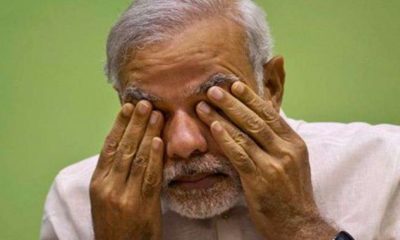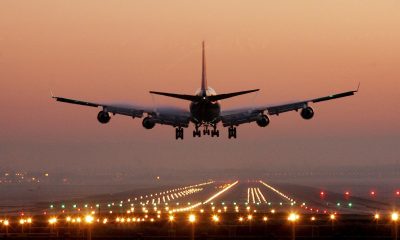Top News
Pollution in AC transit-corridor buses 25 percent lower than in AC cars

 Commuters in air-conditioned buses experience an average 25 percent drop in levels of fine, toxic particles–called PM2.5–than their counterparts in AC cars and a 76 percent drop compared to non-AC modes of transport, according to a new study conducted in Ahmedabad over three seasons.
Commuters in air-conditioned buses experience an average 25 percent drop in levels of fine, toxic particles–called PM2.5–than their counterparts in AC cars and a 76 percent drop compared to non-AC modes of transport, according to a new study conducted in Ahmedabad over three seasons.
The buses studied plied on the 89-km Bus Rapid-Transit System (BRTS) in Ahmedabad, a city of 5.5 million, where the annual growth rate of motorised vehicles (24 perceent) is about five times higher than that of the city’s population (4.7 percent). The BRTS is India’s most extensive and the study indicates how bus-based rapid-transit systems – 94 percent cheaper than Metro rail, according to the study – might be the best option for India’s growing cities.
PM2.5 refers to particulate matter smaller than 2.5 micrometers, or roughly 1/30th the thickness of human hair.
BRTS commuters were exposed to the least PM2.5 levels because toxic particles were most abundant closest to the ground; the buses ran on a segregated corridor, often screened by trees; and travel time was quickest on the BRTS, so limiting PM2.5 exposure.
The study, “Impact of Bus Rapid Transit on Urban Air Pollution: Commuter’s exposure to PM2.5 in Ahmedabad”, was conducted on a 10 km stretch by the Centre of Excellence-Urban Transport, CEPT University, Ahmedabad and EMBARQ India, a transport research advocacy.
The measurements were done in three phases (December 2011-January 2012; April 2012-May 2012 and June 2012-July 2012) representing the winter, summer and the monsoon periods.
India’s urban air-pollution levels exceed safe levels many times over; India has overtaken China in terms of PM2.5 levels and 13 of the world’s 20 most-polluted cities are now in India.
Why other Indian cities need dedicated bus corridors
With Delhi announcing, in its new budget earlier this week, that it would introduce more buses to persuade richer commuters to abandon their cars, the Ahmedabad experience is relevant to larger cities, although Delhi in 2016 controversially dismantled its Rs. 180 crore (over $27 million) 5.8-km bus corridor built in 2008.
With the second phase of Delhi’s odd-even experiment to be implemented from April 15, studies of personal-exposure levels will allow more relevant debate.
About 150,000 buses run in Indian cities, but there are virtually no dedicated corridors for them, a requirement if PM2.5 levels are to be as low as Ahmedabad. No studies have been done of PM2.5 levels in metro-rail systems.
Ahmedabad’s BRTS commuters experienced the city’s lowest PM2.5 levels irrespective of season and time of day, compared to commuters who travelled by other modes of transport. Due to seasonal variations, there was a 57 percent, 49 percent and 67 percent reduction in mean PM2.5 levels compared to other modes of transport during the winter, summer and monsoon respectively.
PM2.5 concentrations varied significantly over the year, registering the lowest levels during the monsoon and highest in winter – mean levels dropped 61 percent from winter to summer and 25 percent from summer to monsoon.
Delhi experiences the highest levels of pollution in winter because of several reasons, including the burning of paddy fields in neighbouring states, winter fog, construction dust and vehicular exhaust, as IndiaSpend has reported.
Buses in dedicated corridor 27 percent speedier than other buses
An non-BRTS bus in Ahmedabad traveled 18 km per hr, an average of 18 minutes per trip, compared with an average travel time of 13 minutes in a BRTS bus, leading to reduction in exposure to PM2.5 levels and other pollutants.
The assessment demonstrates that the reduction of travel time by 25,000 hours can help in reducing exposure to higher PM2.5 counts through BRTS travel and potentially lead to significant health benefits.
What must shift in the debate on air pollution
The primary focus of the air-pollution debate has been the ambient (or atmospheric) pollutant levels in cities from the data recorded by CPCB, IndiaSpend and other sources. The Ahmedabad study emphasises the need to move the debate from ambient readings to personal-exposure levels – which eventually–should be the focus.
“The odd-even experiment didn’t register any decrease in ambient levels as the data reveal, but I am sure it must have had a significant impact on personal exposure levels, which should be the focus going forward,” said Madhav Pai, Director of EMBARQ India, and co-author of the study.
What is the road ahead for Delhi?
The BRTS in Delhi, the world’s most polluted city, failed due to several shortcomings, as an article in The Wire by Dinesh Mohan argued. Mohan, who was part of the team that advised the government on the BRTS, wrote:
The biggest mistake made was to limit the corridor to 5.8 km instead of the planned 18 km. If that had happened, a huge number of bus commuters, bicyclists and pedestrians would have benefitted and served as a pressure lobby to retain the corridor.
All bus drivers and their managers should have been put through a training programme on safe and efficient use of the corridor.
“Rather than investing in expensive freeways and flyovers, Delhi should invest in footpaths, cycle tracks, buses, and BRT,” said Clayton Lane, Chief Executive Officer of The Institute for Transportation & Development Policy, headquartered in the US, in an interview to The Hindu.
(In arrangement with IndiaSpend.org, a data-driven, non-profit, public interest journalism platform. Devanik Saha is a New Delhi-based freelance journalist. The views expressed are those of IndiaSpend. The author can be contacted at respond@indiaspend.org)
Entertainment
Casino Days Reveal Internal Data on Most Popular Smartphones

International online casino Casino Days has published a report sharing their internal data on what types and brands of devices are used to play on the platform by users from the South Asian region.
Such aggregate data analyses allow the operator to optimise their website for the brands and models of devices people are actually using.
The insights gained through the research also help Casino Days tailor their services based on the better understanding of their clients and their needs.
Desktops and Tablets Lose the Battle vs Mobile
The primary data samples analysed by Casino Days reveal that mobile connections dominate the market in South Asia and are responsible for a whopping 96.6% of gaming sessions, while computers and tablets have negligible shares of 2.9% and 0.5% respectively.
The authors of the study point out that historically, playing online casino was exclusively done on computers, and attribute thе major shift to mobile that has unfolded over time to the wide spread of cheaper smartphones and mobile data plans in South Asia.
“Some of the reasons behind this massive difference in device type are affordability, technical advantages, as well as cheaper and more obtainable internet plans for mobiles than those for computers,” the researchers comment.
Xiaomi and Vivo Outperform Samsung, Apple Way Down in Rankings
Chinese brands Xiaomi and Vivo were used by 21.9% and 20.79% of Casino Days players from South Asia respectively, and together with the positioned in third place with a 18.1% share South Korean brand Samsung dominate the market among real money gamers in the region.
Cupertino, California-based Apple is way down in seventh with a user share of just 2.29%, overshadowed by Chinese brands Realme (11.43%), OPPO (11.23%), and OnePlus (4.07%).
Huawei is at the very bottom of the chart with a tiny share just below the single percent mark, trailing behind mobile devices by Motorola, Google, and Infinix.
The data on actual phone usage provided by Casino Days, even though limited to the gaming parts of the population of South Asia, paints a different picture from global statistics on smartphone shipments by vendors.
Apple and Samsung have been sharing the worldwide lead for over a decade, while current regional leader Xiaomi secured their third position globally just a couple of years ago.
Striking Android Dominance among South Asian Real Money Gaming Communities
The shifted market share patterns of the world’s top smartphone brands in South Asia observed by the Casino Days research paper reveal a striking dominance of Android devices at the expense of iOS-powered phones.
On the global level, Android enjoys a comfortable lead with a sizable 68.79% share which grows to nearly 79% when we look at the whole continent of Asia. The data on South Asian real money gaming communities suggests that Android’s dominance grows even higher and is north of the 90% mark.
Among the major factors behind these figures, the authors of the study point to the relative affordability of and greater availability of Android devices in the region, especially when manufactured locally in countries like India and Vietnam.
“And, with influencers and tech reviews putting emphasis on Android devices, the choice of mobile phone brand and OS becomes easy; Android has a much wider range of products and caters to the Asian online casino market in ways that Apple can’t due to technical limitations,” the researchers add.
The far better integration achieved by Google Pay compared to its counterpart Apple Pay has also played a crucial role in shaping the existing smartphone market trends.
Content provided by Adverloom

























